Omaha is a city of immigrants, and North Omaha is no exception. Along with its historic African American community and wealthy white settlers, the community has been home to Jews, Scandinavians, English and other Europeans. Among this plethora of diversity are Italians from across their homeland who came for jobs, homes and connections. More than Mister C’s or an Italian sandwich shop at 30th and Ames, there is a rich heritage in the community that’s almost entirely lost. This is a history of Italians in North Omaha.
Omaha’s First Italians

Starting in the 1850s, Omaha City attracted Italians who ran bars, barber shops and more. Pioneers from Northern Italia settled downtown. By the 1880s, Calabrians started moving to the city to work on the railroads, at the lead smelter and in other labor jobs. These families went on to open the fruit stands, groceries and other businesses that thrived. Settling around South 24th and Poppleton, they and the first Italians in the city appear largely irrelevant to North Omaha’s growth.
Sicilians Are Not Italians
Many people in the United States who came from Sicily do not regard themselves as Italian. At the turn of the century, the Salerno brothers stated recruiting fellow Sicilians to come to Omaha, and they grew the Sicilian community around South 10th and Pierce Streets, which became known as Little Italy before World War I. Neighborhood institutions like the Bank of Sicily and Saint Philomena’s Cathedral were essential for Sicilian and Italian strength in Omaha.
No matter where they came from though, Italians were segregated from the rest of Omaha, both because they chose to be and because they were forced to be. Gathering together allowed Italians to build camaraderie, including economic, religious, cultural and social customs. However, it was also out of necessity since Italians weren’t allowed to move into other neighborhoods, work at some businesses or otherwise integrate into Omaha.
New Italians, New Neighborhood

However, the two neighborhoods south of downtown didn’t keep ALL the Italians in the city. From the early 20th century through the 1950s, Italian immigrants from northern, central and southern Italy lived throughout much of Omaha’s Near North Side neighborhood. Specifically, their homes, businesses and churches extended from North 15th to North 22nd Streets, and from Izard Street on the south to Locust Street on the north.
Better educated than their countrymen in Omaha’s Little Italy neighborhood, these immigrants lived close to the ASARCO smelter; the railroad yards for the Union Pacific and other companies, and; other big businesses throughout the North Downtown area. They also bordered smaller business districts along North 24th and North 16th Streets, which were filled with hundreds of Italian-owned mom-and-pop groceries, bakeries, light industry and more.
Holy Family Catholic Church
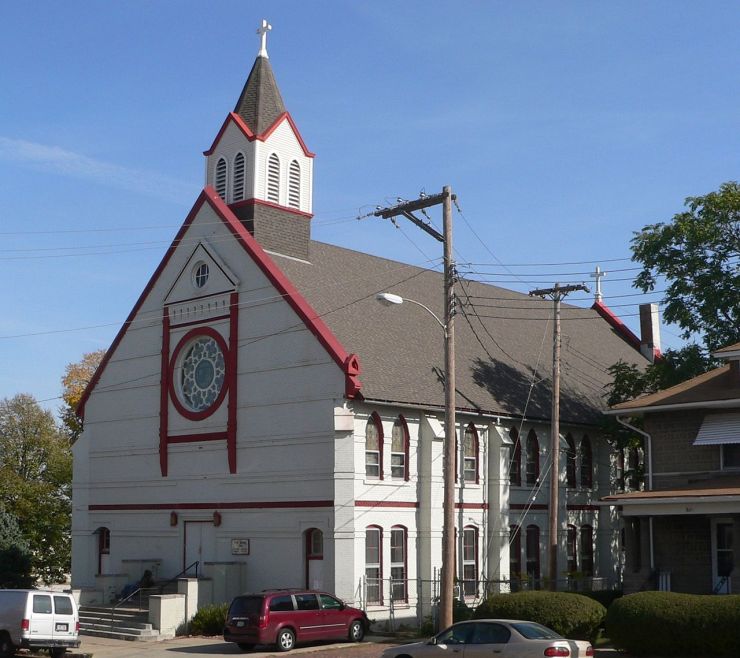
The Holy Family parish started in 1876 in a little frame building at North 17th and Cuming Streets. This temporary chapel served until 1883 when the present church was partially built. In 1897, the parish boundaries were from Cass Street on the south to Grace Street on the north; from North 20th Street on the west to the Missouri River on the east.
Starting at the turn of the century, Omaha’s parishes were divided among ethnic groups for many years. From the 1930s through 1961, since its surrounding neighborhood was Italian Holy Family was an Italian parish. Its priests were Italian, parishioners were Italian and its traditions were Italian. They celebrated Italian saints and feasts, and played Italian music during their festivals. As late as 1970, Omaha had 14 designated national parishes, but only two still held regular services in their native languages.
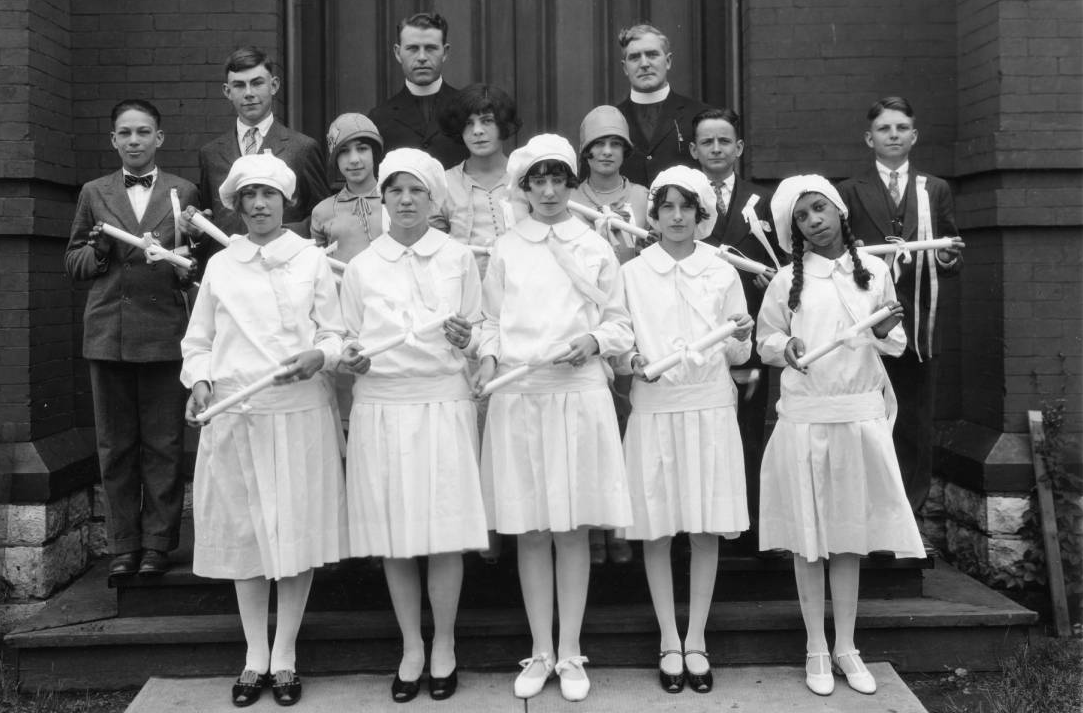
Holy Family was the center of social life for North Omaha’s Italian community, too. Weddings were held there in old Italian fashion through the early 1960s, with half-mile long processions, large meals and hundreds of people attending. Parish children attended the Holy Family School on the first floor of the church, too, for more than 80 years.
The parish has been committed to social justice since the 1960s, too. Father John McCaslin led that development starting in 1967, and the church has grown in its outreach since then. They supported Sienna House from its inception, as well as offering food banks and other outreach, too.
Saint Alfio Society

Starting in 1929, the parish hosted the Saint Alfio Society. Soon after, the Saint Alfio Hall was built at North 17th and Clark Streets. Focused on mutual aid for Italian immigrants, the society held annual festivals and parades, fireworks and other events as well, all to raise money to help their countrymen. The society sponsored its first large parade during Saint Alfio’s saint week in May.
In 1930, the society shipped a statue of Saint Alfio from Italy to Omaha. When the statue originally arrived in September 1930, it was brought to the Omaha City Auditorium for public viewing for a week. According to a 1930 article in the Omaha World-Herald, North Omaha’s statue of St. Alfio is life-sized, featuring the saint sitting on…
“an elaborate gold throne, requiring two years to make. It weighs more than five hundred pounds and is of bronze, over which the makers have placed gold and silver plates. A medallion belt is encrusted with jewels. St. Alfio has a silver palm in his right hand, and a cross of silver in his left. There is a silver halo about his head. The features are delicate, but it is explained that St. Alfio was a young boy, one of three brothers, all of whom were saints.”
-from “Hail Statue of St. Alfio; Unveiling ceremony Sunday at Auditorium; two years passed in the making,” from the Omaha World-Herald on September 13, 1930.
Afterwards, it was placed at Holy Family, where Father Patrick F. Cooney and a celebration was held.
Saint Alfio Festival
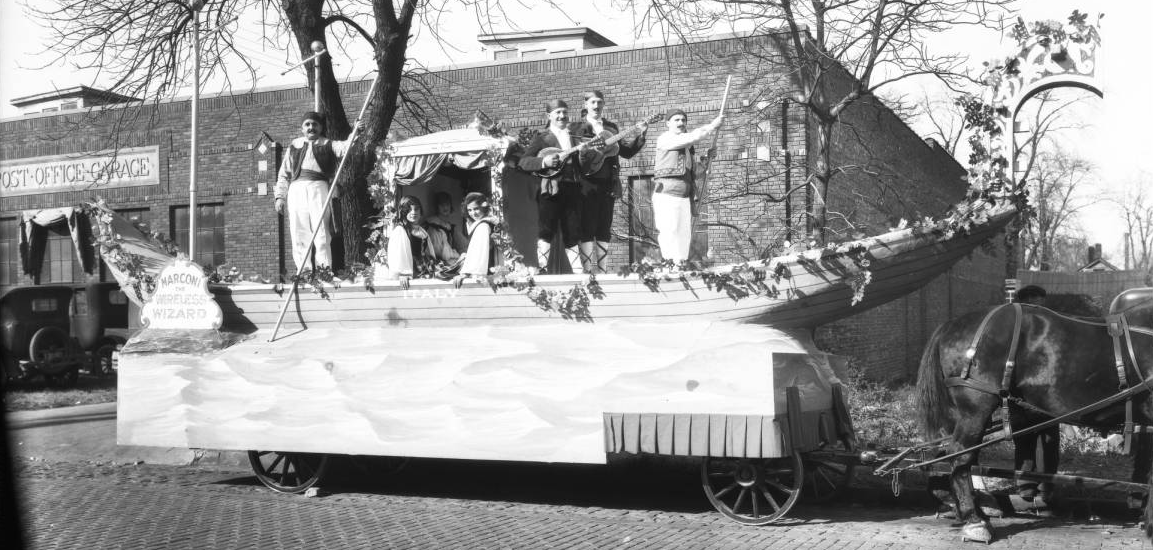
Annually afterwards, the Saint Alfio Festival centered on the carrying of a statue of Saint Alfio throughout the neighborhood. After a long procession, the parade culminated in the placement of the statue in an archway outside the church. The festival was located on North 17th from Nicholas to Clark. A large carnival was then held and a benediction was held for young women involved in the society. The festival included a special mass, the shooting of cannons filled with confetti, 22 concession stands, 15 shows and a variety of rides. Starting in 1938, the feast week was eight days long, with events culminating an annual dance. Omaha’s entire Italian community was invited, and thousands regularly attended through the 1950s. That year, the Saint Alfio Arch was located at North 17th and Grace Streets by the Saint Alfio Hall.
The Omaha Italian-American Band directed by Vincent Emmanuel regularly played carnivals and festivals held in the streets and lots around Saint Alfio Hall, too. In the 1930s, men who organized the festival leadership included Joe Baldanza, John Laferia, Franco Franck, Alfio Sapienza and Franco Ferraro. In the 1950s, the organizing committee included A. Alessandro, R. De Marco, A. Sapienza, M. F. De Marco, P. F. Mascarello, and Al Cascio.
Italian Businesses
There were several businesses that identified specifically as Italian-owned over the 20+ years of the Italian neighborhood in North Omaha. They included grocery stores such as the Nicholas Street Market at 1108 North 17th Street and the Troia Market at 1702 Clark Street. The Troia family ran their store in the neighborhood from 1932 through 1966. Reflecting the movement of Italians from the neighborhood was a neighboring grocery store called Montclair Market. Located on the corner of North 30th and Cuming Street, Anthony S. Battiato and his brother Dominic J. Battiato opened the business in the 1940s.
White Flight

The Italian ethnic designation for Holy Family was ended in the early 1960s when the church was made open to members from across the city. The congregation became increasingly integrated during this time and lost its Italian identity. Church members moved to several other parishes, and the religious icons associated with its Italian identity were given to other churches
Starting in the 1940s, the neighborhood around the church was increasingly industrial. With the construction of Interstate 480 through the southern part of the neighborhood in the 1950s, many homes were destroyed.

In a 1976 interview, Rev. McCaslin said as discrimination against Italians ended and members became more affluent in the 1950s, many families moved away from the inner-city neighborhood to west Omaha. Right after World War II, Italian families went to the Miller Park and Minne Lusa neighborhoods where the iconic Mister C’s Italian Steakhouse reflected their heritage; many of the East Omaha truck farms were run by Italians, and; Ann’s Italian Subs was a well-renowned sandwich shop at 30th and Ames for several years.
While Holy Family stayed open after then, the Italian neighborhood in North Omaha did not. Today, the Saint Alfio statue is located at Saint Francis Cabrini Church. Holy Family closed in 2019. The building has been listed on the National Register of Historic Places, and is currently being used for community outreach activities. There are no other signs of the Italian community once located in this part of North Omaha.
You Might Like…
- A History of North Omaha’s Holy Family Catholic Church
- A History of the North Omaha School aka Izard School
- A History of Cass Street School
MY ARTICLES ABOUT THE HISTORY OF OMAHA’S NEAR NORTH SIDE
GROUPS: Black People | Jews and African Americans | Jews | Hungarians | Scandinavians | Chinese | Italians
EVENTS: Redlining | North Omaha Riots | Stone Soul Picnic | Native Omaha Days Festival
BUSINESSES: Club Harlem | Dreamland Ballroom | Omaha Star Office | 2621 North 16th Street | Calhoun Hotel | Warden Hotel | Willis Hotel | Broadview Hotel | Carter’s Cafe | Live Wire Cafe | Fair Deal Cafe | Metoyer’s BBQ | Skeet’s | Storz Brewery | 24th Street Dairy Queen | 1324 N. 24th St. | Ritz Theater | Alhambra Theater | 2410 Lake Street | Carver Savings and Loan Association | Blue Lion Center | 9 Center Variety Store | Bali-Hi Lounge
CHURCHES: St. John’s AME Church | Zion Baptist Church | Mt. Moriah Baptist Church | St. Philip Episcopal Church | St. Benedict Catholic Parish | Holy Family Catholic Church | Bethel AME Church | Cleaves Temple CME Church | North 24th Street Worship Center
HOMES: A History of | Logan Fontenelle Housing Projects | The Sherman | The Climmie | Ernie Chambers Court aka Strelow Apartments | Hillcrest Mansion | Governor Saunders Mansion | Memmen Apartments
SCHOOLS: Kellom | Lake | Long | Cass Street | Izard Street | Dodge Street
ORGANIZATIONS: Red Dot Athletic Club | Omaha Colored Baseball League | Omaha Rockets | YMCA | Midwest Athletic Club | Charles Street Bicycle Park | DePorres Club | NWCA | Elks Hall and Iroquois Lodge 92 | American Legion Post #30 | Bryant Resource Center | People’s Hospital | Bryant Center
NEIGHBORHOODS: Long School | Logan Fontenelle Projects | Kellom Heights | Conestoga | 24th and Lake | 20th and Lake | Charles Street Projects
INDIVIDUALS: Edwin Overall | Rev. Russel Taylor | Rev. Anna R. Woodbey | Rev. Dr. John Albert Williams | Rev. John Adams, Sr. | Dr. William W. Peebles | Dr. Craig Morris | Dr. John A. Singleton, DDS | Dr. Aaron M. McMillan | Mildred Brown | Dr. Marguerita Washington | Eugene Skinner | Dr. Matthew O. Ricketts | Helen Mahammitt | Cathy Hughes | Florentine Pinkston | Amos P. Scruggs | Nathaniel Hunter | Bertha Calloway
OTHER: 26th and Lake Streetcar Shop | Webster Telephone Exchange Building | Kellom Pool | Circus Grounds | Ak-Sar-Ben Den
Elsewhere Online
- Holy Family Catholic Church official website
- American Italian Heritage Society of Omaha official website
BONUS PICS!


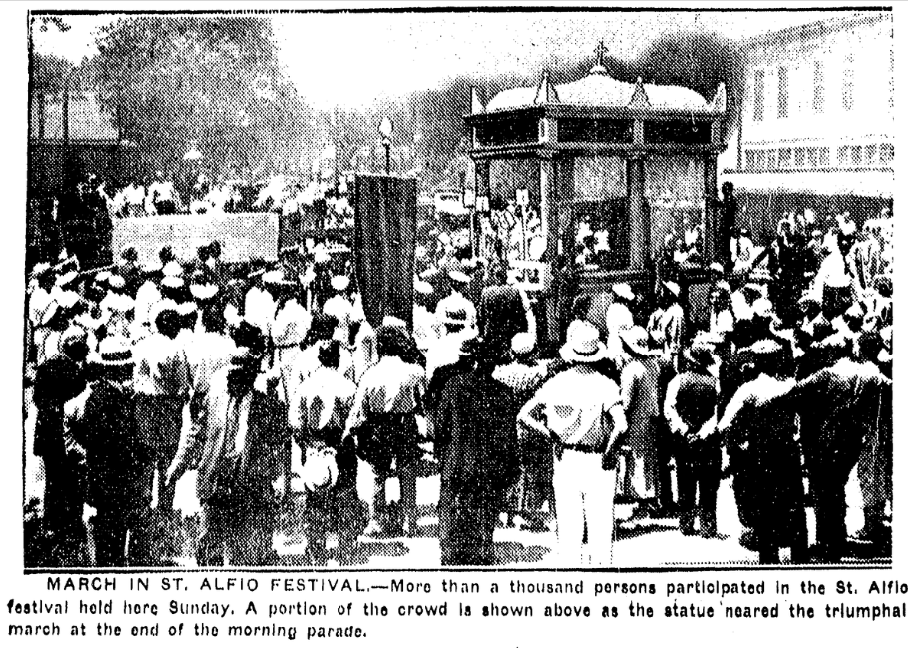





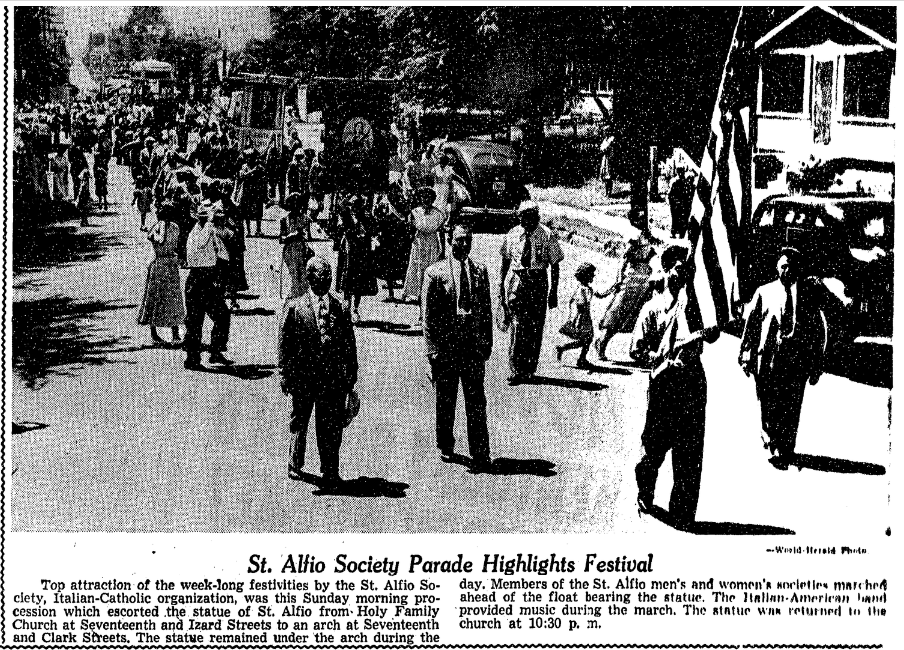
Leave a comment